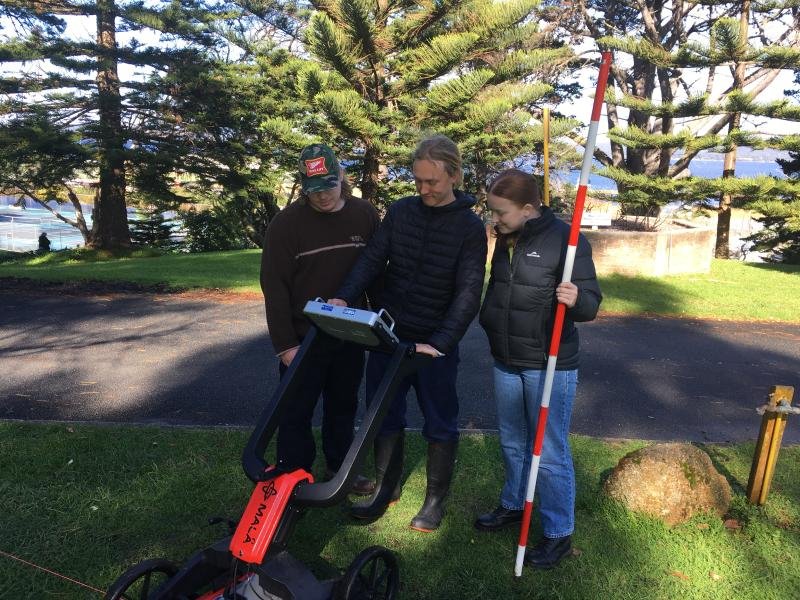A team of staff and students from the University of Notre Dame Australia recently have unearthed what they believe to be the remains of a 187-year-old jail.
Led by Archaeology and History Senior Lecturer Shane Burke, the group of 14 students conducted a three-day fieldwork expedition using ground-penetrating radar to explore the early European settlement area.
 Credit: the University of Notre Dame
Credit: the University of Notre Dame
Their findings indicate that the structural remains of the 1836 town jail lie approximately 0.8 meters below the park’s surface. Historical records show that the brick jail, which measured 5.6 meters by 11.6 meters in 1852, had likely been demolished sometime during the 1870s.
Dr. Burke expressed enthusiasm about the significant heritage value of Lawley Park, a site that has served various purposes throughout thousands of years. In the 1830s, the British utilized the area as a store, commissariat, and jail, adding to its historical significance. He further noted that the fieldwork brought to light physical evidence of Albany’s history and prehistory that had remained undiscovered until now.
The small jail served as an occupation for police constables and prisoners before it eventually vanished, likely around 1870. Surface artifacts found at the base of the hill during the expedition suggested that the area might have also been used for recreational and military functions.
Throughout their exploration, the team covered a significant area of 300 square meters at Lawley Park using ground-penetrating radar and pedestrian transects. Additionally, they had access to historical records at the local library during the trip, where they convened for daily debriefing sessions open to the public. This allowed residents to witness and participate in discussions about the discoveries made each day.
The fieldwork, undertaken by students studying archaeology and history majors at Notre Dame’s Fremantle campus, was supplemented by the presence and guidance of Ph.D. candidate and tutor, Lauren Tomlinson, alongside Dr. Burke.
Notably, this is not the first time that Dr. Burke and his team have unearthed a significant historical site in Albany. Back in March 2019, they discovered what is believed to be Western Australia’s oldest colonial building—a 190-year-old commandant’s quarters—about 1.2 meters underground at a park on Parade Street.
The findings of this recent discovery will be compiled into a comprehensive report that will be submitted to the City of Albany. This report is intended to help guide future developments and conservation efforts in the area, ensuring that the historical significance of the site is appropriately preserved and appreciated.
The University of Notre Dame Australia expressed graтιтude to the City of Albany for their support in conducting the Lawley Park fieldwork. The collaboration between the university and the local authorities is crucial in preserving and understanding the region’s rich history.





